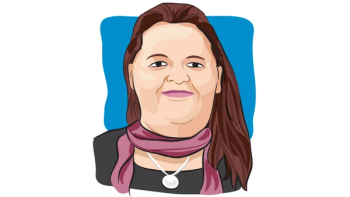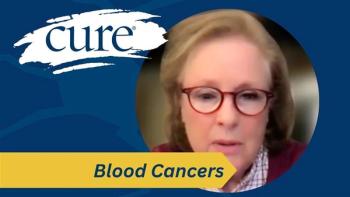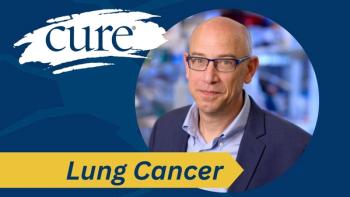
A Guide to Multiple Myeloma Treatment Options
Learn about treatment options for multiple myeloma.
Treatment is based on the stage of disease at diagnosis, underlying health conditions and other considerations. Often, very early-stage disease is monitored without active therapy since a person can live years before the disease escalates. When and how to treat myeloma is a complex decision. Because patients can live with the disease for years and treatment rarely offers a cure, patients may undergo several types of therapy as time passes.
In general, treatment options for myeloma can be divided into four categories: chemotherapy (including targeted agents, such as proteasome inhibitors), corticosteroids, immunomodulating agents and stem cell transplantation. If a patient might eventually be a candidate for a stem cell transplantation, certain drugs might be used for initial therapy, because some drugs affect stem& cells more than others.
For example, if stem cell transplantation is not an option, a combination of drugs that includes Alkeran (melphalan), prednisone in combination with Thalomid (thalidomide), Revlimid (lenalidomide) or Velcade (bortezomib) may be prescribed. Alkeran is a chemotherapy drug that attacks rapidly dividing cells, including myeloma cells. Prednisone is a corticosteroid that is also thought to tame the growth of tumor cells. Thalomid is an immunomodulator (it affects white blood cells) that slows the growth of blood vessels into cancer lesions and also targets tumor cells. Revlimid, an immunomodulatory drug that works similar to Thalomid, is typically prescribed when the disease progresses or the patient relapses on Thalomid.
Velcade is a proteasome inhibitor that works inside myeloma cells to block a process that myeloma cells need to grow.
Alkeran combinations are not advisable prior to transplantation because of the effects on healthy cells in the bone marrow. Instead, a combination of Revlimid/Decadron (dexamethasone) or Velcade/Decadron may be prescribed. Decadron is an anti-inflammatory corticosteroid.
Another option may be to receive therapy by entering a clinical trial. Since new drugs and combinations are developed through clinical trials, this option may provide access to treatments that are not yet generally available. (For details, visit
Stem Cell Transplantation
Many patients who are younger and healthier may be eligible for stem cell transplantation. During transplantation, doctors collect stem cells from the patient’s bone marrow or from the circulating blood system and store them. The patient then receives high-dose chemotherapy to destroy the cancer cells. The previously collected stem cells are then reinfused into the patient so they can begin producing new blood cells.
An autologous bone marrow transplantation means the cells come from a patient’s own body. This is the most commonly recommended type of transplantation. Doctors may also use a tandem transplantation, giving two consecutive transplantations within six to 12 months. Studies suggest that about half of patients who undergo a double autologous transplantation see their disease subside for an average of two or more years. An allogeneic transplantation means the cells come from a donor whose tissue type closely matches the recipient. It carries high risks of side effects and, thus, is used less often.
When it is successful, stem cell transplantation can prolong life or lead to disease remission. But it is a procedure with risks—about one or two out of every 100 patients will die from complications of the procedure.
Relapse
Because myeloma is not cured by available treatments, almost everyone with the disease will eventually relapse. In some instances, myeloma is resistant to initial treatment, and doctors must try other options. If the relapse is delayed—occurring more than six months after first treatment—patients may respond a second time to the same chemotherapy. Also, even if patients do not initially respond to treatment, they may still be eligible for a stem cell transplantation.
Future Options
Treatment of multiple myeloma is evolving rapidly, with a lengthening list of drugs to treat the condition. New drugs are under investigation and may be available through clinical trials.
One experimental drug, carfilzomib, works similar to Velcade and is under consideration for approval among patients who have already tried other therapies. In one study, about one in four patients responded to the drug (lowered M protein levels by at least 50 percent) for about eight months.
Pomalidomide, a new immunomodulator, is also in clinical trials. It may provide an option for patients who have developed resistance to Thalomid and Revlimid.
Another drug under investigation is elotuzumab, which works by trying to incite the immune system to find and destroy tumor cells.
Additional drugs, including subcutaneous Velcade and combinations of various agents, are also being studied.
Bone Damage
To treat damaged bones, patients will commonly receive bisphosphonates—drugs that strengthen bones. Two intravenous bisphosphonates are Aredia (pamidronate) and Zometa (zoledronic acid).
A different class of drug under investigation to protect bones is Xgeva (denosumab), an intravenous therapy that is approved for use in other types of cancers that threaten bones, but it is not yet approved for myeloma or other blood cancers.
A rare but serious side effect of these drugs is osteonecrosis of the jaw, which happens when cells in the jaw bone die. The risk seems highest in patients who have oral surgery or tooth extraction immediately prior to or during therapy with these drugs. So before going on bisphosphonates, patients should have a dental checkup and avoid major dental procedures while taking them.
From "A Patient's Guide to Multiple Myeloma" published in the Winter 2011 issue of CURE. Download the full guide





